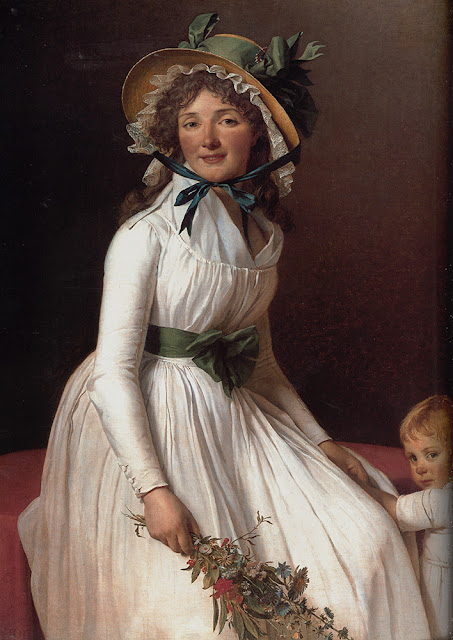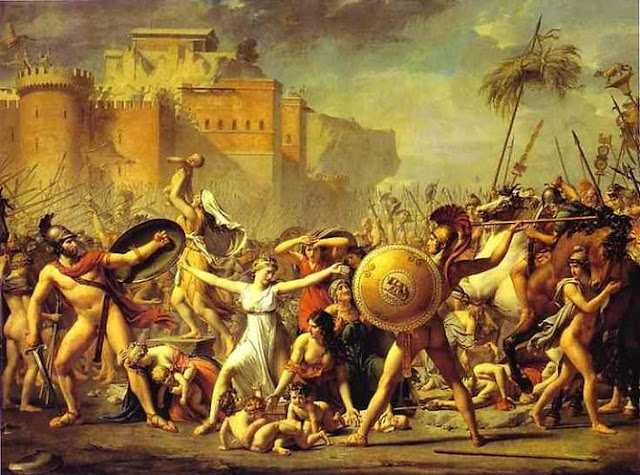Jacques-Louis David
Jacques-Louis David was born into a prosperous family in Paris on 30 August 1748. When he was about nine his father was killed in a duel and his mother left him with his prosperous architect uncles. They saw to it that he received an excellent education at the Collège des Quatre-Nations, but he was never a good student: he had a facial tumor that impeded his speech, and he was always preoccupied with drawing. He covered his notebooks with drawings, and he once said, "I was always hiding behind the instructor’s chair, drawing for the duration of the class". Soon, he desired to be a painter, but his uncles and mother wanted him to be an architect. He overcame the opposition, and went to learn from François Boucher (1703–1770), the leading painter of the time, who was also a distant relative. Boucher was a Rococo painter, but tastes were changing, and the fashion for Rococo was giving way to a more classical style. Boucher decided that instead of taking over David’s tutelage, he would send David to his friend Joseph-Marie Vien (1716–1809), a painter who embraced the classical reaction to Rococo. There David attended the Royal Academy, based in what is now the Louvre.
David attempted to win the Prix de Rome, an art scholarship to the French Academy in Rome, five times. At each failure he became increasingly frustrated with the Academy for denying him the prize, and this dissatisfaction sowed the seeds of a long-standing grudge against the institution. Once, he lost according to legend because he had not consulted Vien, one of the judges. Another time, he lost because a few other students had been competing for years, and Vien felt David's education could wait for these other mediocre painters. In protest, he attempted to starve himself to death. Finally, in 1774, David won the Prix de Rome. Normally, he would have had to attend another school before attending the Academy in Rome, but Vien's influence kept him out of it. He went to Italy with Vien in 1775, as Vien had been appointed director of the French Academy at Rome. While in Italy, David observed the Italian masterpieces and the ruins of ancient Rome. David filled twelve sketchbooks with material that he would derive from for the rest of his life. He met the influential early neoclassical painter Raphael Mengs (1728–1779), and through Mengs was introduced to the pathbreaking theories of art historian Johann Joachim Winckelmann (1717–1768). While in Rome, he studied great masters, and came to favor above all others Raphael. In 1779, David was able to see the ruins of Pompeii, and was filled with wonder. After this, he sought to revolutionize the art world with the "eternal" concepts of classicism




-1824.jpg)

.jpg)
-1784.jpg)












































Tidak ada komentar:
Posting Komentar